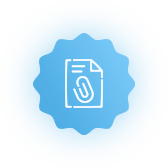Our Perfect Essay Writers Are Always at Your Service!

Whitehouse. (2017). The President’s Commission on Combating Drug Addiction and the Opioid Crisis. Retrieved from https://www.whitehouse.gov/sites/whitehouse.gov/files/images/Final_Report_Draft_11-1-2017.pdf
This informative report co-authored by Governors Christie, Baker, and Cooper among other government officials details the current opioid crisis from a historical perspective and investigates the government’s role which is particularly funded by the federal authorities. The report addresses numerous issues surrounding opioid use, including the development of opioid use disorder, drug overdose fatalities, opioid use prevention, and revisiting of CDC guidelines for opioids prescription among others. While most of these topics are significant for my paper, the most important ones are opioid addiction prevention, reimbursement for non-opioid drug treatment and the topic on new pain, overdose and MAT prescriptions which explore the new alternatives to opioid treatment. I intend to use the report to gather information on the administrative, political and legislative matters surrounding the current opioid crisis in the country. Furthermore, I seek to explore some of the report’s recommendations and the way they can be applicable in bolstering my argument.
The Coalition for Safe and Effective Pain Management (CSEPM). (2017). Reducing the role of opioids in pain management. Retrieved from https://www.caot.ca/document/5992/CSEPM%20Interim%20Report_FINAL.pdf
This report prepared by various health-related organizations that collaborated to investigate the problem of opioid abuse with a goal of reducing the use of opioids in pain management contains various widely applicable concepts that I will use in my paper. Primarily, the authoring organizations acknowledge that the use of non-pharmacological interventions is the best approach to reduce opioid use in pain management. According to the authors, the best approach is to adopt a patient-centered, non-pharmacological approach that is incorporated in the primary care settings. While involving patients is central in these non-pharmacological methods, physicians must be empowered and educated to be compassionate and consider the pain status experienced by their patients. I plan to utilize the report for some non-pharmacological alternatives to opioid use as well as integrate vital data such as statistics and recommendations in order to support my paper’s argument.
Our Free Features
Our agency is the one which can provide you with effective
academic writing projects. There are many features that are offered by our agency for free,
namely:

A title page

Table of contents

An abstract

A reference page /
bibliography

An outline
(on request)
Warloski, J. (2017). Walorski testifies on opioid crisis before House Subcommittee. Congresswoman Jackie Walorski. Retrieved from https://walorski.house.gov/opioid-crisis-ec-subcommittee/
In her report before the house committee, a U.S. congresswoman representing the 2nd district in Indiana Warloski appeals to the subcommittee to implement better approaches and curb opioid use for chronic pain management. Warloski adds that pain is a significant medical issue in the US, as the nation loses over $600 billion directly via health sector or indirectly by productivity. Equally, she argues that the veteran population is largely affected, as most of them live with various chronic health conditions ranging from diabetes to cardiovascular diseases and cancers. She further demonstrates that the best alternatives include non-pharmacological pain management interventions, advanced medical devices, and integrated alternative therapies that can be achieved by investing in extensive research, enhancing multi-disciplinary treatment and improving Medicare to support best practices for pain management. I plan to use these important arguments to strengthen my argument against opioid use.
Okie, S. (2010). A flood of opioids, a rising tide of deaths. New England Journal of Medicine, 363(21), 1981-1985.
In her article, Okie demonstrates that opioid was the leading cause of death in the US followed by cocaine and heroin from 1999 to 2007. Nonetheless, the author connects high mortality rates to unintentional use rather than intentional abuse, and this finding contradicts the common argument that people intentionally abuse medication before they start using such hard drugs as cocaine or heroin. In her investigation, Okie posits that unintentional drug overdose was related to such risk factors as living in a poor county or having a poor educational background. Following such a school of thought, the author concludes by encouraging the move by FDA to require all opioids to provide training and user education manuals for distribution to patients. Despite disagreeing with the author’s line of thought, I am convinced that the article has compelling evidence that I can use to strengthen my argument. I could use the data on mortality rates due to unintentional drug overdose and abuse.
Von Korff, M., Kolodny, A., Deyo, R. A., & Chou, R. (2011). Long-term opioid therapy reconsidered. Annals of Internal Medicine, 155(5), 325-328.
Von Korff, Kolodny, Deyo, and Chou argue that the prescription of opioids became uncontrollably high over the past two decades. As a result, opioid usage has sparked national debate due to the rate at which the drug is abused and overdose cases reported. Nonetheless, the authors report that some studies have documented adverse health effects of long-term opioid intake for pain management. Such adverse effects include cardiovascular disease, bowel damage, fractures, and effects that could potentially worsen with dose increases. The authors advise physicians and pharmacists to be cautious when prescribing and dosing opioids by limiting the dose as much as possible until further studies on adverse health effects of their use are conducted. I aim to use the negative health effects reported in the paper to reinforce my argument against opioid use.

• TOP 10 WRITERS •
Your order will be assigned to the most experienced writer in the field. The highly demanded expert, one of our top-10 writers with the highest rate among the customers.
Volkow, N. D., & Collins, F. S. (2017). The role of science in addressing the opioid crisis. New England Journal of Medicine, 377(4), 391-394.
In their special report, Volkow and Collins demonstrate that opioid addiction, abuse, and overdose are serious health concerns affecting almost all nations. Accordingly, they intend to discuss the role of science in mitigating this rapidly growing public health concern. As part of their solution, the authors discuss the major area that was proposed by the National Institutes of Health in collaboration with private partners. Opioid overdose reversal, the invention of better interventions for addressing opioid addiction and lastly evaluating safer, more effective, less addictive chronic pain management drugs are the primary areas discussed in Volkow and Collin’s article. Most of the paper’s arguments, findings and discussions are directly related to my paper’s main argument. Primarily, I intend to review and apply concepts from the third major area of finding better alternatives for pain management.
Global Commission on Drug Policy. (2017). Position paper: The opioid crisis in North America. Retrieved from http://www.globalcommissionondrugs.org/wp-content/uploads/2017/09/2017-GCDP-Position-Paper-Opioid-Crisis-ENG.pdf
This position paper discusses a wide array of topics related to opioid abuse and overdose in North America, primarily in the U.S. and Canada, which happen to be the second largest consumer of opioids per capita. The authoring organization reports that the current opioid crisis in North America began in the 1990’s when opioid was discovered as a prospective cure for pain and was exacerbated by greedy and immoral pharmaceutical companies which manipulated the original formulation for profit maximization. Consequently, the market was, within a short time, filled with non-standard opioid that causes the overdose and is easily abused due to its pronounced availability. Thus, the authors recommend that better alternatives that have not been manipulated should be approved as alternatives for pain management. Moreover, they stress the importance for stakeholders to join hands and search for overdose and addiction-reversal drugs before banning the use of opioids and ease accessibility of harm-proof and better treatments among other approaches. These are fundamental ideas that can bolster my arguments for the paper.
The National Academies of Sciences, Engineering, and Medicine. (2017). Pain management and the opioid epidemic: Balancing societal and individual benefits and risks of prescription opioid use.Retrieved from https://www.nap.edu/catalog/24781/pain-management-and-the-opioid-epidemic-balancing-societal-and-individual
This book details the outcome of the National Academies of Sciences, Engineering, and Medicine ad hoc committee’s findings on matters surrounding the prescription of opioids following the observation that the drug was one of the most commonly abused and overdosed medication in the history of chronic pain management. The FDA which requested and commissioned the National Academies ad hoc committee developed an opioids Action Plan, 2016 aimed at re-evaluating the FDA’s risk-benefit framework for opioids prescription. Part I, chapter 3 has crucial details on opioids research as well as prospects in the management of chronic pain. Additionally, chapter 5 of Part II of the text has detailed explanations on the evidence supporting some innovative strategies for handling the opioids epidemic. One of the commonest ones that I plan to include in my paper is the use of alternative analgesics such as tramadol.
Paper details:
- 12-point Times New Roman
- 1-inch margins
- Plagiarism-free and AI-free
- 300 words/page instead of 275
- Single or double-spaced
Free Features:
- Free cover/title page
- Free table of contents
- Free abstract
- Free references/bibliography list
- Free outline (on demand)
Hassett, A. L., & Williams, D. A. (2011). Non-pharmacological treatment of chronic widespread musculoskeletal pain. Best Practice and Research: Clinical Rheumatology, 25(2), 299-309.
Hasset and Williams who explore te non-pharmacological interventions for chronic pain management report that integration of both pharmacological and non-pharmacological interventions is more efficacious in chronic pain management. Hassett and Williams add that such non-drug treatments as exercising and cognitive behavioral therapy have in the recent past received much attention due to their effectiveness in pain alleviation. In their article, the authors widely discuss how exercise and CBT can be combined and used to significantly reduce pain and hasten recovery. Although the study findings are not necessarily related to opioids use, the article’s findings have widespread application and relevance to my research paper. I intend to include the article’s recommendation on integrating pharmacological and non-pharmacological pain treatment interventions in my argument.
Menten, J. (2005). Co-analgesics and adjuvant medication in opioid treated cancer pain. European Journal of Cancer Supplements, 3(3), 77-86.
Menten argues that physicians must explore alternative pain management approaches as opioids treatment is met with much controversy. According to Menten, the use of co-analgesics is one of the most promising approaches in the mitigation of skeletal, neuropathic and viscera-related pain. The author adds that unlike analgesics which despite demonstrating some uniformity have adverse health effects, co-analgesics can be much more effective but lack the uniformity so that drugs must be customized and optimized per user. Therefore, Menten advocates for the use of adjuvant medication to treat adverse health effects of opioids. Integration of commonplace pain management drugs that is a common theme in the article as well as other paper assessed earlier seems to be a promising pain management approach. I will use the article to explore the integration of opioids with adjuvant medicine as well as explore the use of co-analgesics in pain management.
Chang, K. L., Fillingim, R., Hurley, R. W., & Schmidt, S. (2015). Chronic pain management: Nonpharmacological therapies for chronic pain. Family Physician Essentials, 432, 21-26.
Chang, Fillingim, Hurley, and Schmidt demonstrate that although non-drug interventions can be used alone in the treatment of chronic pain, they are mostly applied to complement pharmacological interventions. The authors add that physicians should familiarize themselves with these treatment modalities to ensure they optimize their service delivery to patients experiencing chronic pain. Accordingly, they provide some guidelines on the use of such common non-pharmacological pain management interventions as cognitive behavioral therapy, behavioral, integrative and physical therapies. Furthermore, Chang et al. describe how each non-drug intervention can be used:
Behavioral therapy for short-term pain relief; cognitive behavioral therapy for reducing long-term pain and disability; hypnosis as adjunctive therapy; guided imagery, diaphragmatic breathing, and muscle relaxation, especially for cancer-related pain; mindfulness-based stress reduction for patients with chronic low back pain; acupuncture for multiple pain conditions; combination manipulation, manual therapy, endurance exercise, stretching, and strengthening for chronic neck pain; animal-assisted therapy; and S-adenosyl-L-methionine for joint pain (21).
I will use the data in this article to make a table on alternative interventions and establish how each can be used.
Writing Quality
Make the right choice and get the perfect quality papers
Standard value
(Standard value) The task is being completed by one of our professional writers according to the deadline specified - we make sure the script is handled by an appropriate specialist of the particular field of study.

Premium value
(+10% of the order total amount) This option is for clients who want their order to be quickly assigned to one of our professional writers. The premium quality also means that the final paper will be a subject to additional plagiarism checks, and the client will receive a PDF file with a detailed plagiarism report created by our professional editors.

Supreme value
(+15% of the order total amount) Apart from a “Detailed Plagiarism Check” option, our online agents will try to urgently assign a writer among the top 30 best company writers. Your order becomes of the highest priority for us. If you want your order to be our TOP priority, select this option.

Gelinas, C., Arbour, C., Michaud, C., Robar, L., & C?t?, J. (2013). Patients and ICU nurses’ perspectives of non-pharmacological interventions for pain management. Nursing in Critical Care, 18(6), 307-318.
Gelinas and her colleagues investigate the perceptions of patients and ICU nurses of non-drug pain management interventions. The authors acknowledge that pain is a substantial public health concern in primary care settings. They use a descriptive design to explore the views of their study participants towards the usefulness, feasibility, and relevance of non-pharmacological interventions. After recruiting 32 nurses and 6 patients and grouping them in eight focus groups, the participants and researchers explored about 33 non-pharmacological interventions. Although there were variations in the specific intervention, three broad categories of non-drug interventions stood out as the most relevant, applicable and useful in pain management. These interventions included music therapy (cognitive-behavioral based intervention), emotional support and physical exercises. The authors recommend the combination of these interventions, which is a recommendation on which I intend to base my arguments.
